ABB: Contract to Deliver Efficiency Benefits for Portuguese Navy Vessels
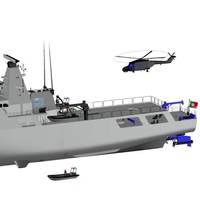
ABB has secured a contract with the West Sea Shipyard located in Viana do Castelo, Portugal to equip six new offshore patrol vessels (OPVs) of the Portuguese Navy with an integrated power, propulsion, and automation system designed to ensure optimal efficiency. The vessels are planned to be delivered between 2027 – 2031.The new vessels will be equipped with the Azipod® propulsion system, Onboard DC Grid™ power system platform, and the distributed control system ABB Ability™ System 800xA®.
Robosys Automation Unveils Autonomous Trial Boat

Robosys Automation, maritime autonomy software developer, has unveiled its new autonomous trials boat, which has been commissioned to deliver testing and sea trials in support of integrating clients’ software and hardware with the VOYAGER AI suite.Robosys’ new boat, the “Pioneer,” is a 6.75 meter SeaPro Center Console 222 supplied by Kirby Marine US and is powered by a Suzuki DF 250 APX outboard engine.The SeaPro was selected as a trials boat that features a Dometic Seastar steering system and a Furuno radar.
Automated Mooring System contracted for Port of Dublin
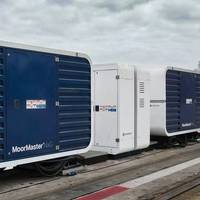
Cavotec signed a multi-million euro order for its MoorMaster NxG automated mooring system to be installed at the Port of Dublin in Ireland. The order, signed at the end of 2024, marks the first deployment of MoorMaster technology in Ireland. Deliveries will primarily take place in the third quarter of 2026.“The installation at this new berth will serve as a benchmark for sustainable port operations in the region while also contributing to the adoption of MoorMaster systems across Northern Europe”…
Unresolved Automation Concerns could Spark Second U.S. Port Strike
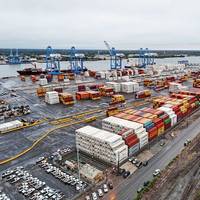
U.S. shippers are steering clear of East and Gulf Coast ports amid worries the 45,000 dockworkers at those trade hubs will go on strike again if their union leader does not land a new contract with employers by a Jan. 15 deadline.The International Longshoremen's Association (ILA) labor union and the United States Maritime Alliance (USMX) employer group had ended a three-day strike in October with a tentative agreement on wages, but left the thorny issue of port automation still to be resolved."Anything we expect that we need in the back half of January…
US Port Strike Throws Spotlight on Big Union Foe: Automation
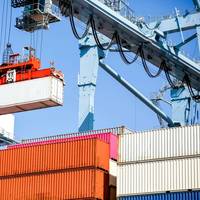
A strike by dockworkers on the U.S. East Coast and Gulf Coast that disrupted much of the nation's ocean shipping this week ended on Thursday, but a key issue driving labor unrest across the continent - the growing use of automation - was unresolved.Companies view automation as a path to better profit while unions see it as a job-killer. For North American dockworkers battling automation, Europe's port worker contracts may point a way to resolve the issue.Some 45,000 port workers…
Damen Buys Ship Repair Robots for Yard in Dunkirk
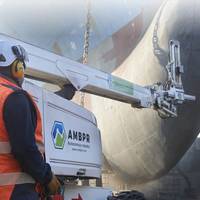
AMBPR, a SERCEL company, announced that it has signed a contract with Damen Shiprepair Dunkerque for the sale of the first five ship repair robots. Damen in Dunkerque is thus the first shipyard in the world to acquire the GreenDock Robot, an autonomous solution for washing, UHP and abrasive blast cleaning, and painting of ships.The official signing took place at the SMM trade fair in Hamburg on September 4 following several years of collaboration between the robot manufacturer and DSDu…
Liza Unity is First FPSO to Earn ABS REMOTE-CON Notation
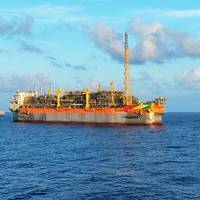
The ABS-classed Liza Unity has received the first REMOTE-CON notation for an floating production storage and offloading (FPSO) from ABS. The notation demonstrates the vessel’s alignment with remote-control functions and signifies that the design and construction of the offshore asset are assessed against and adhere to the ABS Requirements for Autonomous and Remote Control Functions.The Liza Unity is the second FPSO to be built for ExxonMobil Guyana’s Stabroek Block development and the first delivered under SBM Offshore’s Fast4Ward program.
Valaris Jack-up Using AI for Man Overboard Detection
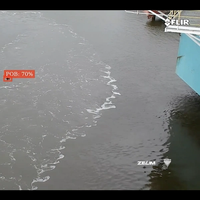
A Valaris jack-up drilling rig is using an AI-enabled intelligent detection and tracking solution to provide automated person overboard detection and alerts, marking the first time the cutting-edge technology has been deployed in the offshore oil and gas sector.Zelim's ZOE software was installed on board the Valaris Stavanger in February after the Edinburgh-based technology company worked with the drilling contractor to customize the solution for the specific requirements of jack-up vessels.
AST Launches Remote Asset Management System
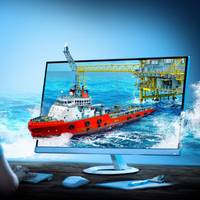
Applied Satellite Technology (AST) has launched its Integrated Remote Asset Management System (IRAMS).IRAMS is designed to address the challenges faced by industries such as oil and gas, maritime, renewables and utilities, where maritime assets are in remote and often harsh environments. With IRAMS, users can remotely control and monitor assets. IRAMS brings together live asset performance data, predictive maintenance scheduling and environmental impact reporting onto one single platform.
Australia Creates Permit-Free, Autonomous Marine Tech Test Area
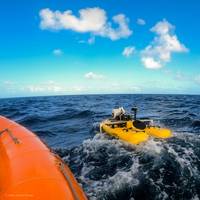
For the first time in Australia, autonomous marine technology developers have a location to safely test autonomous vessels without needing to apply for a permit. The Australian Institute of Marine Science’s ReefWorks inshore test range, near Townsville in north Queensland, was granted regulatory sandbox approval for uncrewed vessels from the Australian Maritime Safety Authority (AMSA).It’s the first approval issued under a proposed Australian Maritime Regulatory Sandbox advocated by Trusted Autonomous Systems (TAS), AIMS and AMC Search.
USEA Ocean Data One Step Closer to Uncrewed Ship
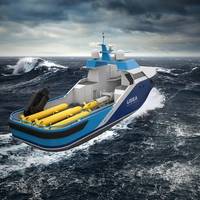
USEA Ocean Data has received preliminary approval to build and operate a 24-meter uncrewed vessel on Norwegian waters reports the company's CEO, Felipe Lima.USEA has developed a unique technology for safe seabed data acquisition with the help of unmanned vessels and autonomous underwater vehicles. Right after New Year came the preliminary validation that the company needed to build and operate a the vessel on Norwegian waters."We are very few companies who have passed such preliminary assessment from the Norwegian Maritime Authority…
Vessel Autonomy in Offshore Wind: Scaling up Ops via Tech, Regulation
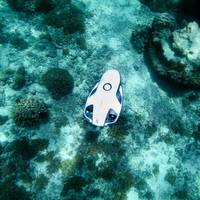
Autonomous technology is adding value to the offshore wind (OSW) industry, its supply chains and government policy with the potential to deliver benefits such as increased operational efficiency and safety, and reductions in human error and operational costs. With the unique needs for wind leases and their relative close proximity to shore, a wider group of systems and technologies can be deployed.A developing regulatory landscapeAutonomous technology is the result of rapid advancements in sensors and imaging, vessel connectivity, machine learning, and more.
Sea Machines Debuts AI-ris Computer Vision for Commercial Vessels

Marine perception sensor aims to provide high-def situational awareness to eliminate at-sea collisions and allisionsSea Machines Robotics unveiled AI-ris (Artificial Intelligence Recognition and Identification System), a new marine computer-vision navigation sensor designed to improve safety and performance while vessels are underway. Sea Machines’ AI-ris uses digital cameras and AI-processing to detect, track, classify and geolocate objects, vessel traffic and other potential obstacles in the majority of operational conditions, day or night.
Solstad, DeepOcean and Østensjø Launch Remote Ops Venture
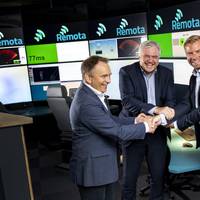
A group of companies working in the offshore energy industry are teaming up in an effort to fast-track the journey toward remotely managed services, including onshore remote operations centers and unmanned surface vehicles (USV).Solstad Offshore, DeepOcean Group and Østensjø Group have established and will share 33.33% stakes in two joint ventures (JV). One of them, Remota AS, will own and operate advanced onshore remote operations centers, while the other, USV AS, will develop…
SAFEMATE Autonomous Vesel Project Launched

A newly launched autonomous vessel project aims to improve and assess the safety and efficiency of autonomous navigation systems and deploy a pilot on an operational ferry.Partners DNV, Kongsberg Maritime, Kongsberg Seatex, Bastø Fosen and NTNU announced the launch of the new SAFE Maritime Autonomous Technology (SAFEMATE) project, at the Nor-Shipping trade fair on Tuesday.The promise of automating more functions in shipping shows great potential, and interest continues to grow throughout the industry as more projects are developed.
Rolls-Royce Unveils New Automation Systems With Sea Machines Tech
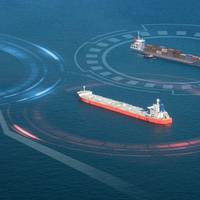
Rolls-Royce is expanding its range of mtu NautIQ ship automation systems with three new products offering different levels of intelligent crew support, autonomous control and remote command capabilities.The new products—mtu NautIQ CoPilot, mtu NautIQ CoOperate and mtu NautIQ CoDirect—are the next step in the cooperation between Rolls-Royce and autonomous control and remote-vessel command systems developer Sea Machines Robotics, which was first announced in September 2021.The most advanced intelligent pilot assist system of the new product range…
Tech File: Inside the Furuno ‘Future Bridge’
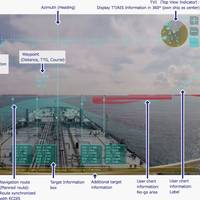
With autonomous navigation and remote electronics management, Furuno is on a digital transformation journey to help revolutionize the maritime industry. Matt Wood, National Sales Manager, Furuno USA takes a deeper dive.In 1938, Kiyotaka Furuno founded Furuno Electric Shokai Ltd., the predecessor of Furuno Electric Company. Today Furuno is best known as a radar and navigation company with nearly 90 percent of its business in the maritime sector. “We are still principally a family-owned…
Rolls-Royce to Deliver Automation Solutions for New German Navy Frigates

Rolls-Royce's Power Systems business unit, headquartered in Friedrichshafen, Germany, will deliver the automation solutions (in German FüSAS – Führungssystem Automation Schiffstechnik) for the four new F126 frigates for the German Navy.Damen Naval is building the four F126 class frigates together with its partners Blohm+Voss and Thales, after the partners were selected as successful bidders in 2020 following a European tender process spanning several years. The first ship is expected to be delivered to the German Navy in Hamburg in 2028.
Navantia Taps Pemamek for Shipbuilding Production Lines

Navantia placed an order for the automated PEMA Panel Lines, Profile Processing Lines and Sub-Block Production Lines, designed to ensure that Navantia Shipyards will have the latest laser-hybrid-based welding and robotic technology fully integrated to create the Shipyard 4.0 working environment. The agreement between Navantia and Pemamek -- which entails several phased deliveries during the next two years -- includes an advanced automated and robotized PEMA Panel line, PEMA Profile Processing Line, and PEMA Sub-Block Production Line for Navantia’syards in Spain.
Ian-Conrad Bergan Rebrands as Bergan Marine Systems
Ian-Conrad Bergan, LLC.—a marine equipment manufacturer for over 45 years—announced the company’s rebrand, new leadership and new direction. Rebranding as Bergan Marine Systems under new president and CEO, Kyle Durden, the company will expand its focus to include electronic and computer controls, as well as cloud-based solutions for marine data systems, along with continuing their traditional products.“While we’ve been a mostly product-centered company throughout our history, we’re now integrating our products with computer-based control systems and generating data that’s transmitted to the cloud, to customers in real-time,” Durden said.Initially founded in Norway, the company moved to the Pensacola, Fla.
Need a Survey? There’s a USV for That

While the adoption of unmanned/uncrewed surfaces vessels (USVs) was initially in defence, use of these low footprint systems has spread into other sectors, not least survey, and now the race is on for greater capability, endurance and autonomy. Elaine Maslin reports.After starting small, in inland waterways, use of USVs for survey operations has moved into coastal and now offshore waters. Given the extensive amount of seabed and rapid growth in offshore wind, there’s plenty of work out there for them to do.With the travel restrictions posed by Covid and increasing awareness of climate change…
'RoboRat' Takes to the Water for 'Intelligent' Autopilot Test
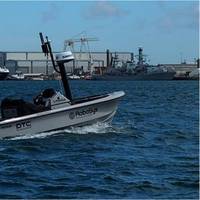
Robosys Automation, developers of Voyager autonomous navigation systems, built in close collaboration with Ring Powercraft, Ambex Marine and DTC, Domo Tactical Communications have put the 'RoboRat' on trial in the Solent area, a trial showcasing Robosys’ latest intelligent autopilot software for commercial and recreational vessels and demonstrations for a multitude of applications are being scheduled throughout the summer. The ‘RoboRat’, designed for inshore reconnaissance/ survey…
Huntington Ingalls Industries Debuts Proteus USV
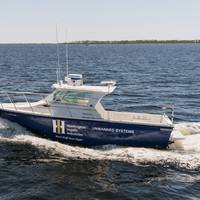
Huntington Ingalls Industries (NYSE: HII) debuted the 27-foot Proteus unmanned surface vessel (USV) for testing and development of autonomy capabilities. Proteus, outfitted with Sea Machines Robotics’ SM300 autonomy system, completed a successful demonstration off the coast of Panama City, Fla., on May 14.“We are thrilled to launch our Proteus USV. The vessel performed exactly as expected with the SM300 system’s proven and safe autonomous capability,” said Duane Fotheringham, president of the Unmanned Systems business group in HII’s Technical Solutions division.

